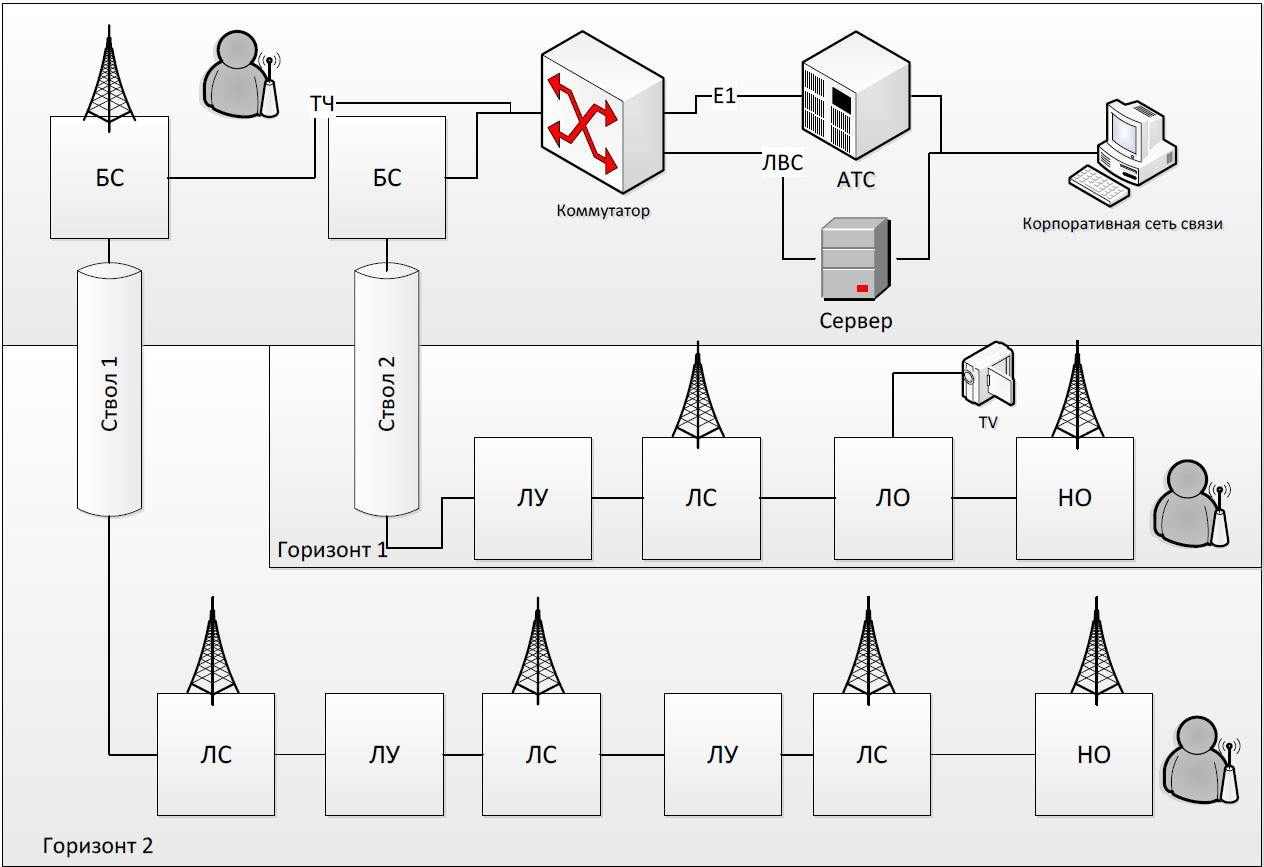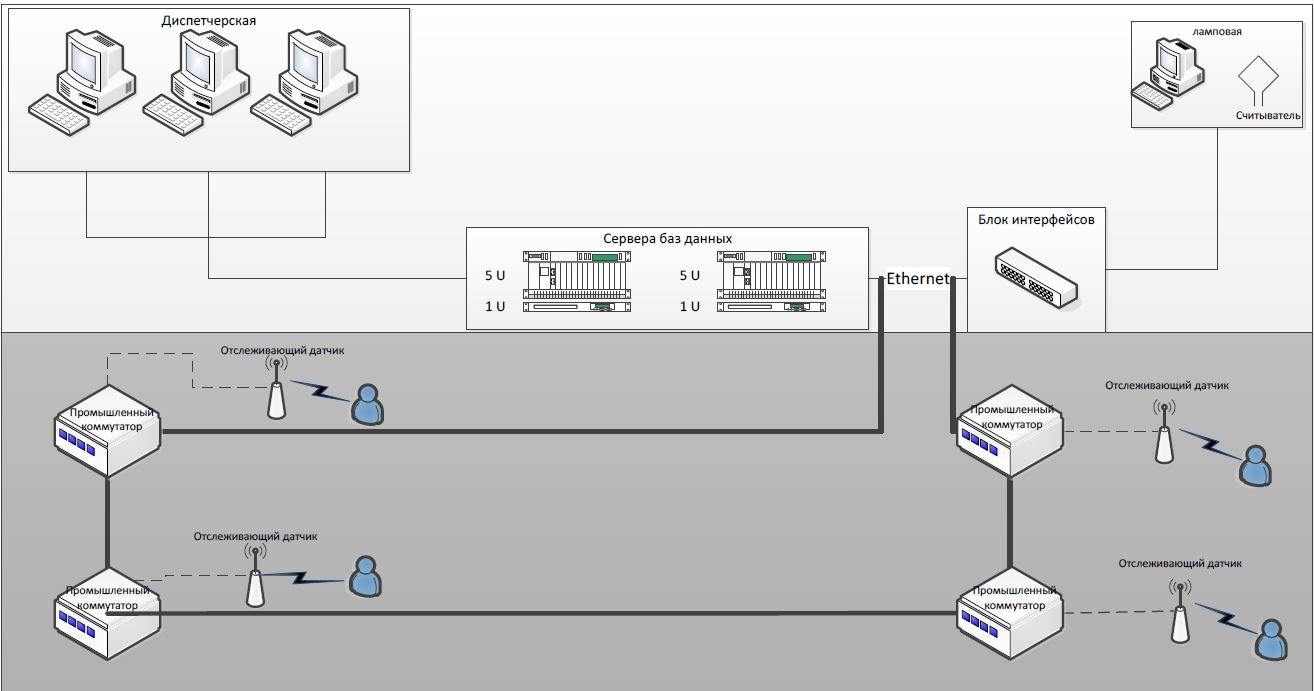Содержание
- Introduction
- 1. Relevance of the topic
- 2. The purpose and objectives of the study
- 3. Overview of the complex positioning "Talnah"
- 4. Overview of the complex positioning "Radius - 2"
- 5. Application shared use Zigbee technology with RFID tags
- Conclusions
- References
Introduction
In the event of an accident in the mine rescue service is important to know who is involved in an accident, their number and exact location. For the year 2009 in Ukraine there are 164 mines, employing around 235,000 people. It is important to not only keep track of people who are in a dangerous area, but also to track their location in real time [1][8].
1. Relevance of the topic
Coal is usually characterized by a large amount of capital investment, cost of service. In case of emergency, it is very difficult to determine what the staff was "trapped", the amount and exact location. Identification and coding personnel is vital to the maintenance center telecommunication network of special-purpose emergency and normal operating conditions [1][4].
2. The purpose and objectives of the study
The purpose of work: improving the efficiency of the search of mining workers in the underground part of the mine.
Objectives:
- analyze the existing solution and tracking human infections in the underground part of the mine;
- consider a mathematical model of the propagation of radio signals in the underground part of the mine;
- building model propagation of radio signals in the software package LabView;
- evaluate the results and draw conclusions.
The object of study is the propagation of radio signals in the underground part of the mine.
The planned scientific and technical novelty:
- Further development of the use of radio technology to find workers in the underground mining of the shaft;
- Development and implementation of a software model of signal propagation in the mine.
3. Overview of the complex positioning "Talnah"
The hardware-software complex "Talnah" is intended for the construction of mining and underground radio communication and automation built mines, as well as for the modernization of outdated communications systems operating enterprises. The complex provides a reliable voice radio on the surface and in the underground part of mines with access subscribers in the production and technological communication network enterprise, as well as the transfer of data from automated control systems, video surveillance and positioning of personnel and equipment.

Figure 1 - Block diagram of the complex "Talnah"
At the heart of the complex equipment "Talnah" is radiating cable. This solution provides a unique opportunity to provide a basis for the construction of communication networks for different purposes: conventional radio systems, paging, industrial television, data communications, SCADA, etc [2].
4. Overview of the complex positioning "Radius - 2"
This system of underground wireless alerts, paging, surveillance and search of people caught by accident. Radio tags embedded in «Radius Mine Radio Locator», emit special signals, allowing to locate miners in an emergency through the rock mass from 5 to 15 meters. The maximum detection range - up to 50 meters with line of sight. Detection accuracy 1m.

Figure 2 - The block diagram of the complex "Radius 2"
To observe the location of the underground mine staff, access control and time attendance RFID technology is applied using active and passive RFID-tags.
The sensor system is interconnected via a fully meshed network technology ZigBee, which allows in case of failure of one of the sensors to cover its coverage neighboring sensors. The basis of the ZigBee networks put wireless standard short-range IEEE 802.15.4. Also, a device on the ZigBee technology requires low power consumption, which in the case of the shaft is a great advantage.
As a part of the subsystem used fiber-optic link. The use of fiber provides a link between reader’s terminals at a considerable distance (20 km) of each other without refresher devices [3].
5. Application shared use Zigbee technology with RFID tags
The principle of the telecommunication network of underground mines is as follows. When you exit the tube is RFID scanners (sensors), which read that a miner went down into the mine.
Dispatching by these readers know who went down into the mine. Over credit arranged sensors (a distance from each other of 30 to 50m). These sensors are connected through an optical cable to an industrial switch. Industrial Ethernet Switch is connected to the control room.
All sensors are connected to each other through a ZigBee connection that allows you to organize fully meshed network. Miner, moving on mine, will be permanently reconnected to the different sensors [6].
Conclusions
In the course of work were considered some basic positioning systems, the people in the underground part of the mine, in the CIS countries, indicating the advantages and disadvantages of each. There were also defined goals and objectives for the master's thesis.
And proposed the idea of sharing technologies such as RFID and s ZigBee, in the underground part of the mine to identify mining workers in the event of landslides, as well as support timecard personnel and equipment.
References
- Про затвердження Правил безпеки у вугільних шахтах: Закон Украіни від 07.09.2011 N 960 // Офіційний вісник України. – 2011. – № 62 – Режим доступу: http://zakon2.rada.gov.ua/свободный. — Загл. с экрана.
- Статья о подземном комплексе «Талнах» / Запорощенко Д.В. Режим доступу: http://www.tek-ua.com/ свободный. — Загл. с экрана.
- Научно-внедренческий инженерный центр «Радиус» [Электронный ресурс] Режим доступа: http://www.radius-nvic.ru свободный. — Загл. с экрана.
- Статья о "Применение технологии ZigBee для идентификации персонала горнодобывающих предприятий" / В.Я. Воропаева (канд. техн. наук, доц.), Р.Ш. Абрамов Режим доступу: http://masters.donntu.ru/ свободный. — Загл. с экрана.
- Статья о "Исследование процесса распространения радиоволн в телекоммуникационных сетях специального назначения" / В.В. Турупалов (канд. техн. наук, проф.), И.А. Молоковский (асп.), Р.Ш. Абрамов Режим доступу: http://masters.donntu.ru/ свободный. — Загл. с экрана.
- Преимущества и ограничения RFID технологии [Электронный ресурс]. Режим доступа: http://www.itproject.ru свободный. — Загл. с экрана.
- Правила безопасности в угольных шахтах: Постановление Госгортехнадзора России № 50 / Начальник Госгортехнадзора России В.М. Кульечев. – М.: Москва – 2004. – 134 с.
- Краткий теоретический курс по технологии беспроводных сетей ZigBee [Электронный ресурс]. Режим доступа: http://indemsys.ru/ свободный. — Загл. с экрана.
- Сайт компании НПФ
Гранч
[Электронный ресурс]. Режим доступа:Система Умная шахта
свободный. — Загл. с экрана.
